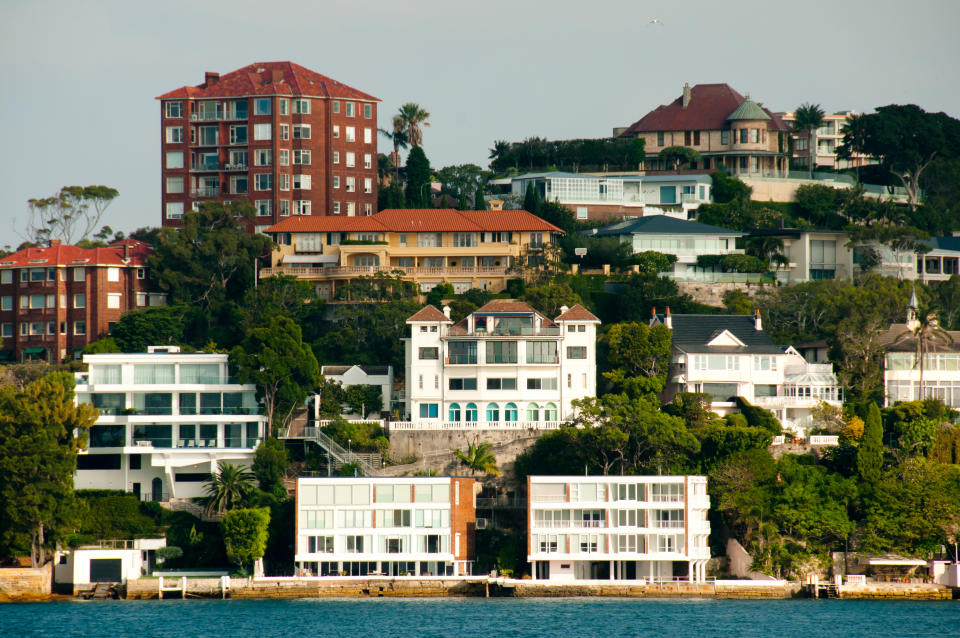The 'unfortunate' property trend forced by Covid-19

You may have heard journalists and economists use the phrase “two-tiered economy” in the past, and wondered: what does it actually mean?
Without over-simplifying, it’s exactly what it sounds like – it means there are two streams of the economy running concurrently.
In one, many people are struggling to make ends meet, and in the other people are financially flourishing.
With the challenges of Covid-19 many people say we’re in the same boat – that’s not true.
We’re in the same ocean, but we’re not in the same boat.
Of course, this is always true to a degree: there are always going to be some sections of society that are wealthier than others.
But what is happening to the wealth gap in Australia right now?
According to recent Australian Tax Office (ATO) and Productivity Commission (PC) statistics, the gap between the haves and the have nots is growing.
For example, the PC found that the incomes of people under the age 35 have actually fallen over the past decade while, in general, the incomes of Gen Xers and Boomers have grown.
Digging deeper into the ATO income data, you’ll find that the average income among Double Bay's residents grew by 85 per cent between 2013-14 and 2017-18, to reach around $242,400 – the highest in the nation.
Yet over in the Sydney suburb of Auburn, the average income increased by only 4 per cent across the same period – to reach just $37,686.
This is the lowest wage growth on record in Sydney.
What do these stats mean for property markets?
In simple terms, what this means is that even in the current economic climate, where wages growth is likely to be minimal, if at all, there are still some suburbs where on average the residents’ wages are still growing strongly.
And in these locations, the locals will have the capacity to pay more for properties when they’re shopping for a home.
In these more affluent and established inner and middle ring suburbs, the local residents may be employed in professional careers with six-figure salaries that continue to increase.
And as their income grows, so too does their borrowing power and their ability to service a larger mortgage.
These people often have multiple sources of income such as a share portfolio, property investments or business dividends.
This gives them more leverage when buying a home; they can afford to out-bid the competition and offer a higher price, which serves to drive up local property prices.
Meanwhile in other locations, in particular the lower socio-economic areas such as the outer suburbs, there will be minimal wage growth.
When you also factor in that mortgages in 2020 are the cheapest they will ever be, meaning no prospects of further interest rates cuts to help increase affordability, then it is likely that property price growth will stall in these areas.
Is this a new phenomenon?
No, it’s not!
There has been a growing gap between “wealthy” and less premium suburbs for many decades.
In every city along the east coast of Australia, the eastern suburbs – closer to the beach, the CBD and all the lifestyle amenities that come with these areas – have always been home to people with better incomes and higher levels of wealth than those living in the west.
At the same time, the gap between these inner and middle ring suburbs and the outer suburbs has slowly but surely widened.
Unfortunately there will be considerable fallout from the coronavirus-induced recession, including low or minimal wages growth for many years to come, and the reality of the situation is that Covid-19 is doing more economic damage to young people than to those aged in their 40s and 50s.
Younger Australians have lost their jobs in far higher numbers than older people.
For those who have held onto their jobs, a fair chunk are working fewer hours or for reduced incomes.
And for those who’s jobs and incomes haven’t been impacted, wages are expected to grow even more slower over coming years, financially hurting those who have more working years ahead of them.
Is it all bad news?
Well, it depends on your attitude and perspective, I guess!
So far I’ve painted quite the picture of doom and despair.
But in reality, it’s not all as devastating and dire as it may appear.
To begin with, the economic downturn we are now entering is not going to be an equal opportunity offender.
Some professions and jobs will not only be immune from the downturn, but they will experience above-average growth in wages.
This means that moving forward, the gap between the haves and have nots will continue to grow.
However, if you fear you’re going to fall into the have nots category, don’t despair.
There are always opportunities to leverage your position and grow your wealth, such as rentvesting, buying property with a friend or family member or investing in a more affordable suburb interstate.
Your financial future is in your hands.
Times of economic difficulty have always meant a transfer of wealth from the financially illiterate to the financially literate.
Planning for your financial future is an important task every person needs to do.
Unfortunately earning a decent income today does not guarantee your long term financial stability and leaving your financial future in the hands of chance leads to stress, confusion and uncertainty.
If you want to move from the category of have nots to those who have more money, learn about personal finance and money management, spend less than you earn, save the rest and then invest in high growth residential investment grade properties.
Want to take control of your finances and your future? Join the Women’s Money Movement on LinkedIn and follow Yahoo Finance Australia on Facebook, Twitter and Instagram.

 Yahoo Finance
Yahoo Finance 

